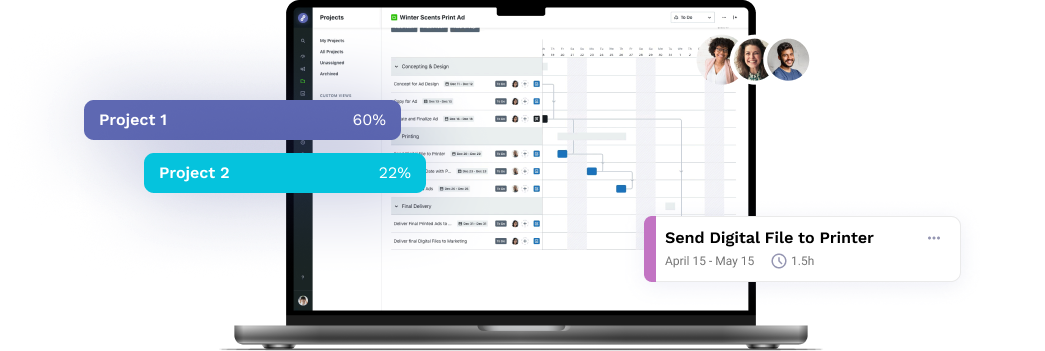
Artificial Intelligence (AI), automation, and rapidly emerging and evolving technologies are quickly taking over a lot of repetitive operational tasks. The demand for skills unique to humans, like ingenuity and creativity, on the other hand, is growing – fast. Research shows that 80% of respondents believe realizing one’s full creative potential to be an essential first step in unlocking one’s personal and professional growth. The need for organizations to promote creativity in the workplace is greater than ever before.
We’ve even seen companies with creative leads perform significantly better than companies lacking innovation. And yet, most executives are disappointed with their organization’s level of innovation. Creativity is key to success and growth but harnessing it in the workplace can be fairly complicated. In ensuring smooth operations and a steady flow of business, many companies view sacrificing creativity and innovation in the name of speed and predictability as a calculated, necessary risk. While many organizations promote creativity and innovation in their list of values, follow-through actions to that end leave a lot to be desired.
How to Promote Innovation and Creativity in Your Organization
To start promoting creativity and gain a competitive advantage through innovation, you should consider making your workplace more accepting and accommodating of the creative process. There are fundamental techniques and attitudes that can be conducive to generating great and novel ideas. Use them to encourage a solution-oriented approach to problems.
Further reading: The 8 Essentials of Innovation and Creativity
Ready to tackle attitudes that need changing? Let’s have a look at that before you start applying creative techniques to your team:
1. Give Time
The enemy of creativity is lack of time. If your team is constantly strapped for time and has an endless backlog of projects to finish, they will be stuck in a tunnel of churning out tasks and not have time for new ideas. If your organization is looking to be a leader in innovation, you need to set time aside for it.
The easiest way to start is to set some hours aside every day/week/month that you strictly reserve for new ideas and complex problems requiring solutions that you address for the first time. Creativity is not an ability that someone is born with. Exercises like this can help create new habits and patterns that encourage thinking off the grid.
2. Give Autonomy
If your colleagues feel like their ideas aren’t respected, or they are being micro-managed, there is no point in setting up exercises that get the creative juices flowing because they won’t work. Your team needs to know they have ownership of their own work and have an influence on the output of their team.
You can increase autonomy by asking questions like ‘How would you do this?’ ‘What do you think would be a good deadline?’ and ‘Which campaign do you think has the best visuals and why?’ and then going with someone else’s ideas, even if their solution to something wouldn’t be your first choice. Show your team they are responsible for their decisions and give them guidance in building confidence in their work.
3. Encourage Storytelling
Whether you work in sales, marketing, communications, branding or any other department, content is key. And not just the central message, but the way something is told. There are a lot of guidelines, processes, and methodologies that steer professionals away from creativity.
For example, marketeers know that their audience is likely to spend no more than 30 seconds on a video. Salespeople know they need to make their points concise and quick to not lose a prospect’s interest. Strictly following these kinds of presumptions and industry standards will not necessarily help you stand out, especially if you sacrifice a good story because you think you can only hold your audience’s attention with specific tactics.
Give your team the freedom to try different methods and encourage them to forget the rules. Focus instead on the story of your ad, pitch, presentation, article, and keynote speech, and lead with that.
4. Be Consistent
Finally, one of the most common mistakes that we see in organizations is not being consistent with promoting creativity. You can implement all the creativity-boosting actions above and still fail if you neglect being consistent. Does the following scenario sound familiar to you?
Twice a year your department organizes a brainstorming day when the whole team gets together and with the help of a specialized coach or a consultant you come up with ideas to improve collaboration/processes/campaigns/visuals/you name it using nice, colorful pens and sticky notes. Participants leave the session full of energy and feeling good about the progress you made. The next day it’s back to business as usual. After a week, all attendants feel like the session was probably from an alternate reality or a collective dream. Next time this type of event is organized, the participants will not be excited because they know it will lead to nothing.
This happens in almost every organization in some shape or form. Be the one who breaks the pattern!
It’s simple; set up next steps and assign responsibilities immediately. If you are consistent and show your team that their efforts to think outside the box result in something, you’ll create a cycle of positive reinforcement that rewards creativity.
Recommended reading: Creative Flow: What Is It and How to Get Into It
What’s Next?
After your company culture is aligned with your values, you can expect more creativity from your existing team. Additionally, truly creative workplaces draw in professionals who personally align with the values your organization believes in. That means your new recruits will be people who are already developing their creative thinking or at least find it important, increasing your company’s chances to come up with a unique strategy, product, or selling point.
If you invest in ways to promote innovation and creativity consistently, the results will come. Creativity takes time, so don’t give up after a couple of months, even if you haven’t invented the next big thing yet. Remember to iterate your new strategy and collect feedback from employees. They are your greatest resource.
The Creative Management Series
Explore our extensive series on creative leadership and creative management to prepare yourself for every challenge ahead:
- 10 Creative Leadership Challenges and Solutions in 2023 and Beyond
- Multiple Project Management: 22 Tips for Capacity and Competing Deadlines
- Creative Feedback: Here Are 5 Ways to Give It More Effectively
- Creative Stimulation: How a Simple ‘Ha-Ha’ Can Make You ‘A-Ha’!
- Agile Project Management – The Robert De Niro Way
- Creative Conflicts in Group Projects? Use These 5 Principles to Navigate Them
- Creative Flow: What Is It and How to Get Into It
- How Can You Promote Innovation and Creativity in Your Organization?
- Burnout: How to Prevent It and Keep Your Creative Team Motivated
Lytho helps you streamline your entire workflow and harmonize all brand collateral under a single, uniform platform. Feel free to reach out to us by scheduling a demo and learning how our creative solutions can boost the effectiveness of your creative projects. We look forward to speaking with you!
Do you want to give yourself and your creative team more room for creative stimulation by automating the boring stuff? Lytho helps you streamline your entire workflow and harmonize all brand collateral under a single, uniform platform. Feel free to reach out to us by scheduling a demo and learning how our creative solutions can boost the effectiveness of your creative projects. We look forward to speaking with you!

Ready to simplify your creative operations and start having a little fun at work again? Schedule time to talk with us.
Let us show you how Lytho’s Creative Operations Platform helps in-house creative and marketing teams do better work, ease the stakeholder experience, and stay on brand.
Schedule a Demo